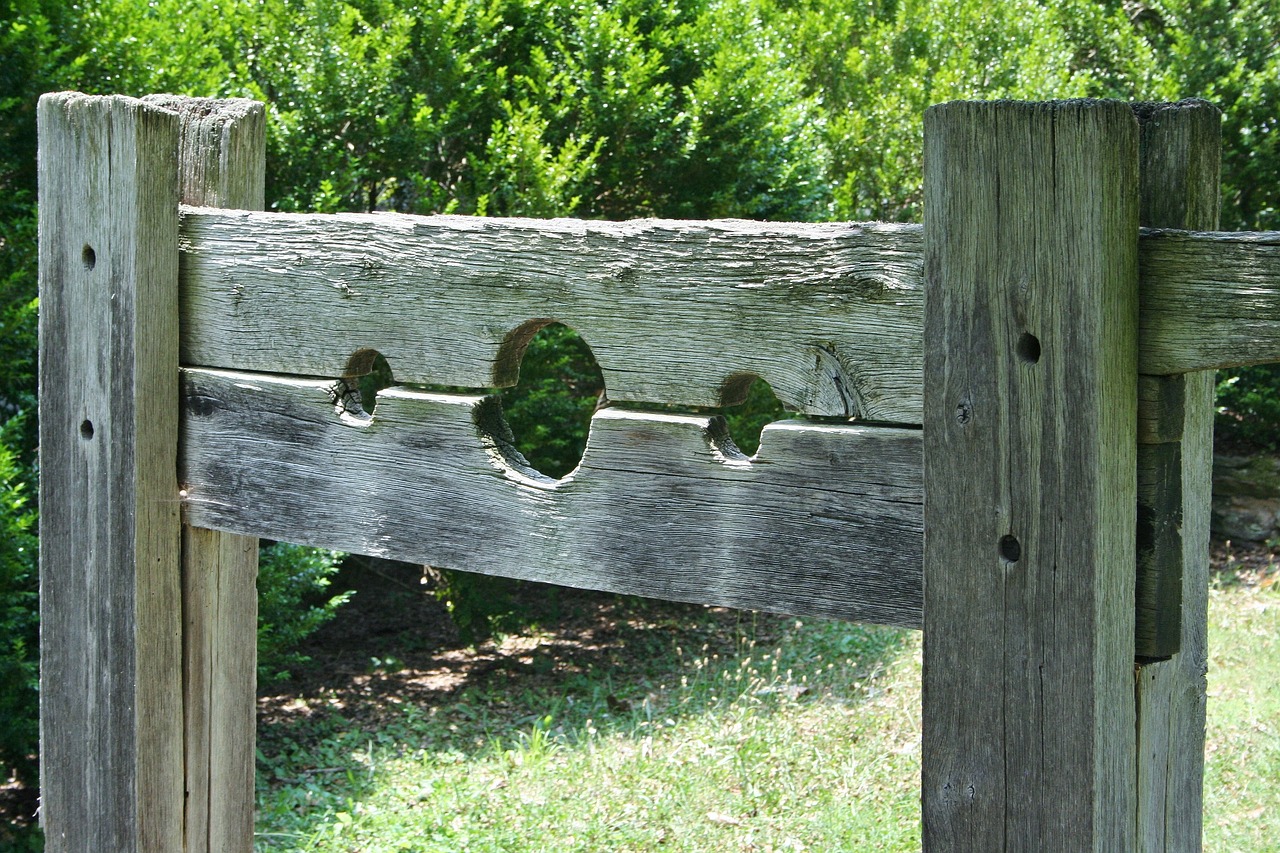3.2 Pre-Classical Justice and the Birth of Criminology
Before the field of criminology existed, crime and justice were not scientifically or systematically studied. To capture this, the approach to crime and justice prior to the 17th century can be characterized as pre-classical justice or pre-Enlightenment justice. Medieval societies viewed crime as the result of sin, demonic possession, or other supernatural causes. Because early European societies were dominated by two major authority figures—the church and the aristocracy (the rich and powerful)—crime was dealt with through religious interventions, and the punishments were often based on the social status of the person who committed the offense. As a result, the same crime would be met with wildly different responses based on who was involved. Punishments were often physical and public in nature, ranging from time in the pillory (figure 3.2) to death by hanging. Carrying out these punishments in public added the element of public humiliation and served as a way to warn other community members of their fate if they committed the same offenses.

The concept of “innocent until proven guilty,” which you are likely familiar with, did not really exist during the pre-classical period. Even when people were subjected to a trial of sorts to determine their guilt, the trial itself could be cruel. A trial by ordeal was a method in which the accused would endure an experiment that “proved” whether or not they were guilty and if they were deserving of mercy. This might include locking someone in a cage in the elements for days or tying a weight to someone’s legs and throwing them into water. If they lived, they were worthy of God’s mercy, and if not, they must be guilty. Check out the video in figure 3.3 for a parody example of a trial by ordeal. As you can imagine, these were not very fair trials, and they certainly did not encourage rehabilitation. The lack of any consistent or effective method of responding to or preventing crime began to outrage citizens who were upset with the irrational system.
The Field of Criminology
The beginning of criminology can be traced back to two major paradigms or schools of thought: the classical school and the positive school. Remember that paradigms are perspectives or ways of thinking that are not necessarily right or wrong, true or false. The first—the classical school of criminology—has its origins in the 18th century and the Age of Enlightenment. The Age of Enlightenment was brought on by the spread of education, philosophy, and new ways of thinking. In other words, people became enlightened. Also, as the middle class became larger, they gained more power. During the 18th century, revolutions in France and the American colonies led to the replacement of monarchies (ruling families) with democratic institutions of government. This put the power in the hands of the people. As a result, the Age of Enlightenment brought about a new era that focused on understanding and addressing human behavior, including crime.
The second major school of thought—the positive school of criminology—has its origins in the philosophy of positivism. This philosophy is grounded in the notion that knowledge should be based on evidence; in other words, if something is proven through evidence, one can feel positive or certain it is true. Positivism marked the start of the application of the scientific method to the study of human populations and social phenomena. During this time, criminologists tried to figure out crime through research that would show them the exact cause in a predictable and preventable manner.
The rest of this chapter will discuss more about the classical and positivist schools of thought, including the societal context, assumptions, and beliefs about crime within each paradigm. Most of the focus in this chapter will be on the classical school and the theories that grew from it, while a more in-depth discussion of early positivist theories can be found in Chapter 4. Keep in mind that the early theories within these perspectives can and have evolved over time. Many are no longer considered valid due to their lack of scientific support or use of outdated methods, while others have drastically changed as our understanding of our social world’s complexities has changed. Nonetheless, studying the foundations of criminology helps us understand the earliest attempts to apply the scientific method to the study of crime and the field’s progression.
Check Your Knowledge
Licenses and Attributions for Pre-Classical Justice and the Birth of Criminology
Open Content, Original
“Pre-Classical Justice and the Birth of Criminology” by Jessica René Peterson is licensed under CC BY 4.0.
“Pre-Classical Justice and the Birth of Criminology Question Set” was created by ChatGPT and is not subject to copyright. Edits for relevance, alignment, and meaningful answer feedback by Colleen Sanders are licensed under CC BY 4.0.
Open Content, Shared Previously
Figure 3.2. Image by JamesDeMers is licensed under the Pixabay License.
All Rights Reserved Content
Figure 3.3. “Monty Python and the Holy Grail – Witch Scene” by Molly E Druce is licensed under the Standard YouTube License.

